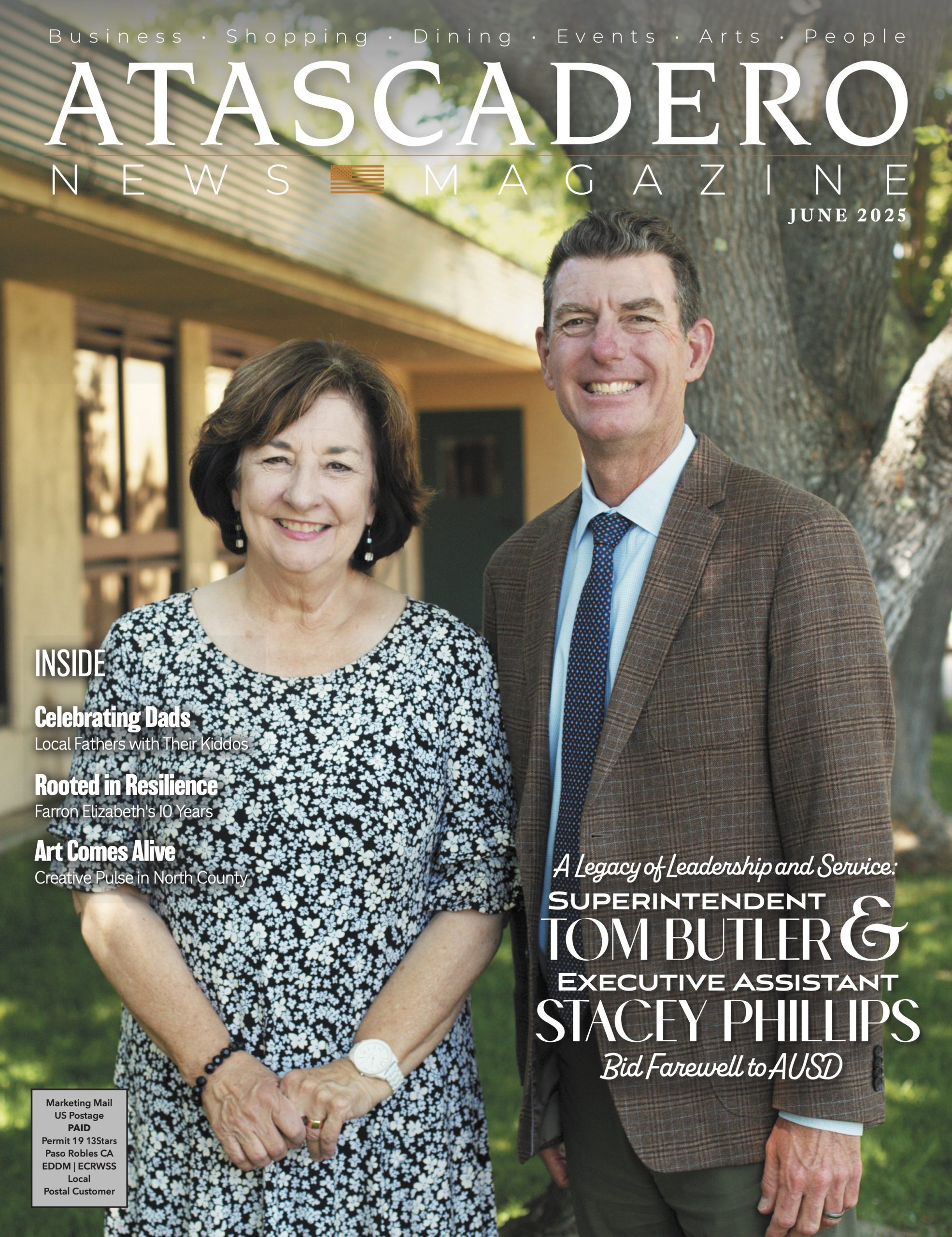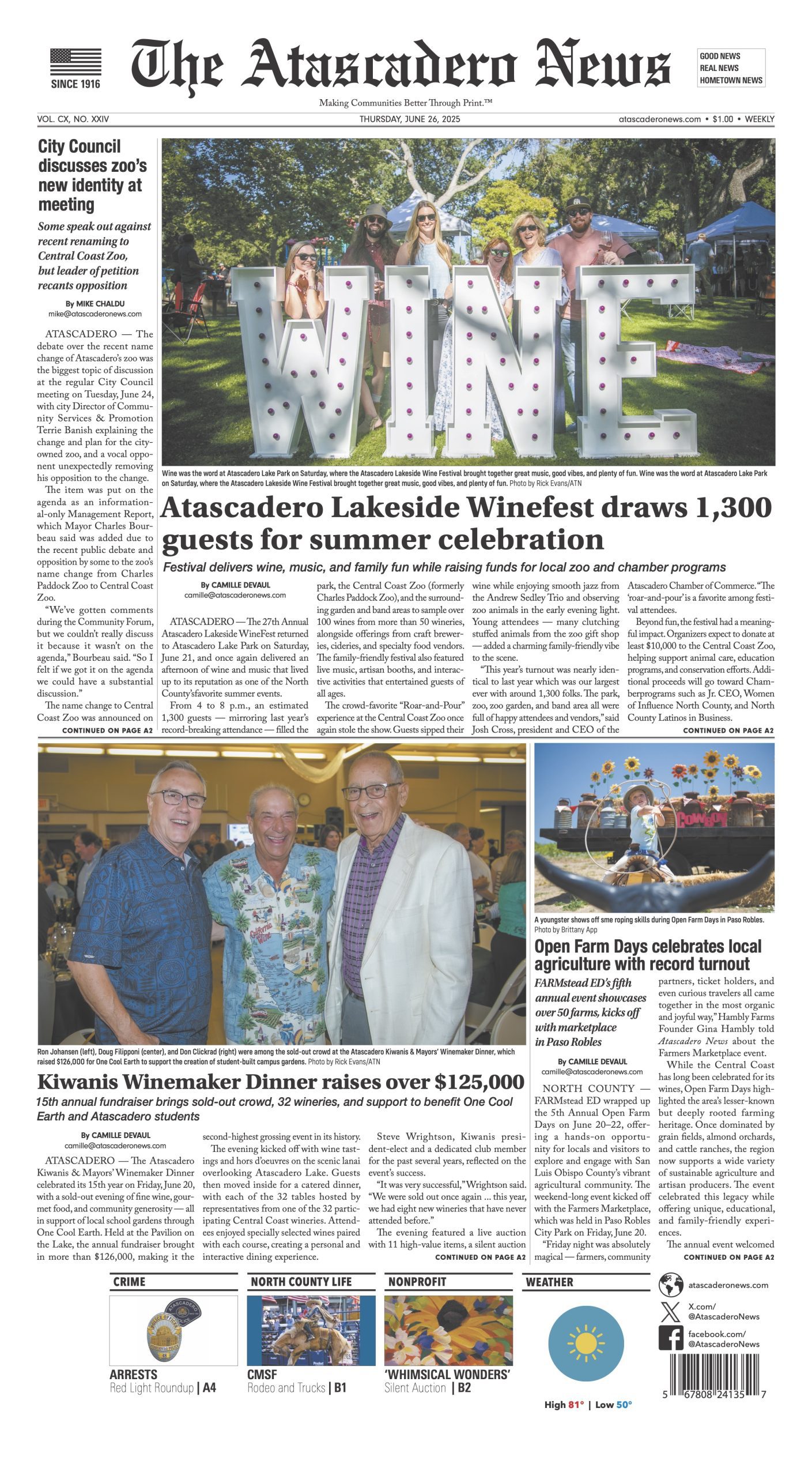Nonprofit leaders say it’s going to get worse due to fallout from pandemic
SAN LUIS OBISPO — The leaders of three San Luis Obispo County homeless services providers called the County’s current situation a “humanitarian crisis” and are bracing for a “tidal wave” in the wake of the COVID-19 pandemic.
Wendy Lewis, president and CEO of El Camino Homeless Organization, Grace McIntosh, deputy director of Community Action Partnership of San Luis Obispo County, and Janna Nichols, executive director of 5Cities Homeless Coalition were on the Expert Panel: Homelessness in SLO County 2020 organized by the League of Women Voters of San Luis Obispo County.
LWVSLO co-President Cindy Marie Absey introduced the panel. Morro Bay City Councilmember Marlys McPherson moderated the discussion.
“You hear homeless crisis so often, and I really look at it as a humanitarian crisis,” Lewis said. “These are people in our community that need help, a different type of help depending on their story and the path they are now on. It’s not hopeless.
Last year, 60% of the people being served at ECHO Atascadero found housing, Lewis said.
“The other thing, a lot of people see it as this huge crisis, and it’s hopeless, and all of us in homeless services know that people with the right resources get housed,” Lewis said. “It just takes different pieces put together with that person doing some hard work with our support to get into housing.”
At the top of the event, panelists thanked the SLO County League of Women Voters chapter for organizing it and then dove right into a matter-of-face discussion.
“One of the things I think is most needed is education, which this is providing,” Lewis said. “We in homeless services hear so many different ideas of what people think are happening. The reality is somewhat quite different.”
ECHO Atascadero operates an overnight 50-bed shelter for families and individuals who have become homeless in North County. Through the 90-day congregate program, clients are provided case management services to secure a job and find permanent and sustainable housing.
The First Step homeless shelter in Paso Robles is on the verge of opening its doors and will include the same services but will be offered in a non-congregate or apartment-style setting.
According to the latest Point in Time Count, 74 percent of the counted people were born and raised in the County, Lewis said.
The count is conducted every two years on one day in January. The survey in 2019 found 1,483 homeless persons throughout SLO County, an increase over the 2017 census, which counted 1,125 homeless persons, according to the San Luis Obispo County Department of Social Services.
The census is intended to provide a snapshot of the population at a single point in time. Key findings from the 2019 report include:
• 79 percent of persons counted were unsheltered
• 21 percent were sheltered
• Less than 10 percent were veterans
The panelists said the every-other-year survey was a useful resource but realizes the total number of homeless is likely considerably higher and will worsen as the economic fallout of the COVID-19 pandemic is realized. A statewide eviction moratorium is set to expire on Jan. 31, 2021.
“You have an income disruption, and the eviction moratorium is about to be lifted, so quite honestly, we as an agency and collectively are bracing for a tsunami of need,” Nichols said. “We are currently seeing about double the requests that we did at the beginning of the year.”
Homelessness is usually the result of the cumulative impact of several factors, rather than a single cause, according to the panelists. Insufficient income and lack of affordable housing were their leading causes of homelessness on the Central Coast.
Nichols said SLO County has less than a 5% vacancy rate. Homeless in South County are generally with low to moderate incomes.
“The who is (homeless) is very specifically tied to the housing and income options,” Nichols said. “There’s a tipping point. There is quite a bit of information that says if you spend more than 32% of your income on rent, you are at risk of homelessness. The greater that percentage within a community, the greater the likelihood that people are going to fall into homelessness. Here in the County we are at 38%.”
A general snapshot of a homeless person in SLO, said McIntosh, is a single man who is 65-and-older with medical conditions. Senior citizen homelessness is the fastest-growing segment.
“They are grappling with this sense of having no roots, they belonged to someone at some point, they were somebody’s mother or brother or sister, and they still are,” McIntosh said. “But they have nowhere to go, so they come to our shelter. The homeless could be anyone. It could be any of us at any point.”
CAPSLO offers various services at its 40 Prado Homeless Services Center, a 365 days per year facility that helps individuals and families improve their health and stability and move them toward self-sufficiency.
Specialized services include the SLO-Hub Project for individuals seeking assistance in dealing with mental health and substance use issues and the Recuperative Care Program that provides a safe place to recuperate and convalesce for individuals who would otherwise be discharged to the streets.
5Cities Homeless Coalition is located in Grover Beach. It does not have a homeless shelter. 5Cities provides various services to the homeless community, serving as the area’s referral center for South County and providing assistance for immediate needs and housing.
ECHO, CAPSLO and 5Cities operate winter warming shelters.
The women said that getting people to accept their help was about building relationships and being there when they were ready to receive it.
“If you just go out and say, ‘hey want to come to 40 Prado?’ You are probably going to hear a lot ‘no, forget it. I don’t want to come to 40 Prado,” McIntosh said. “It’s the development of the relationship, and that can be a very long process with a lot of ups and downs. Someone who might refuse today in two months they may not refuse. So, really you have to look at where that person’s at.”
Each one had examples of people that initially were not open to services but did later.
“The older people get, the more frail they get, the more open they are to services, unfortunately,” Nichols said. “It’s outreach, but it’s also having those options, and if you don’t have those income options or you don’t have those supportive services options and you don’t have a housing option, then coming in for shelter in of itself may not be what they want. It is that conversation of helping people find a path forward, and they may not see it on their own.”
Funding, two-thirds in some instances, for the entities is mostly through community donations in the form of money and or time. The pandemic has made more funding available to groups serving the homeless, but unlike the Homekey project that funded the purchase of a Motel 6 in Paso Robles for the homeless shelter, state and federal dollars are slow in coming.
Location of services and providing a diversity of services are two other universal challenges aside from funding that the nonprofits face now and especially later.
“We are having almost daily conversations about how to change our systems, how to change our services to accommodate what we think is coming and at the same time maximize the services and resources we have so that we don’t stumble over each other,” Nichols said.
The 90-minute free event was live-streamed on Dec. 2 on the LWVSLO’s Facebook page and is available for viewing on its website https://my.lwv.org/california/san-luis-obispo-county. The League of Women Voters said there would be more panels on homelessness.
For more information, visit:
ECHO – www.echoshelter.org
CAPSLO – www.capslo.org
5Cities Homeless Coalition – www.5chc.org















